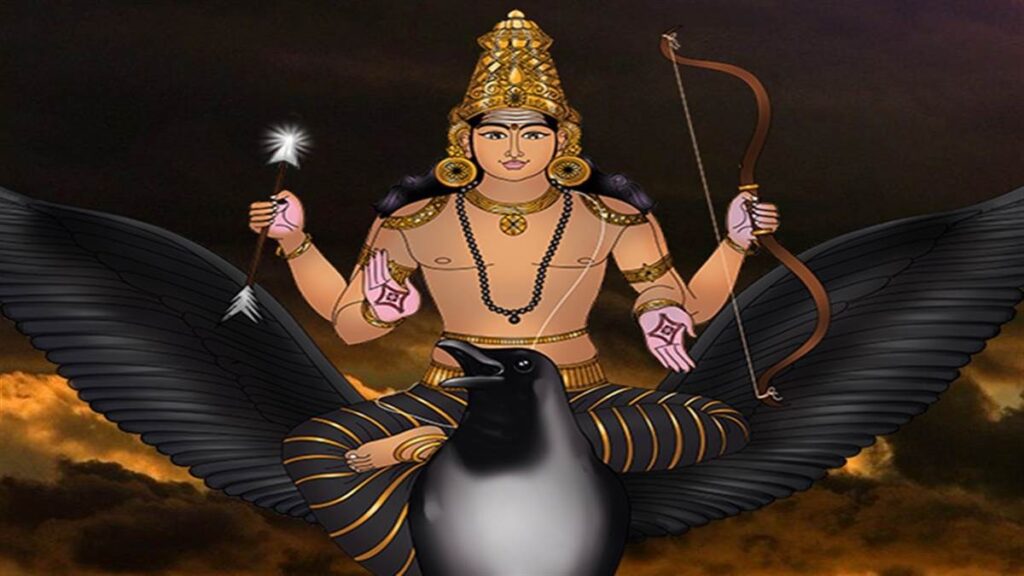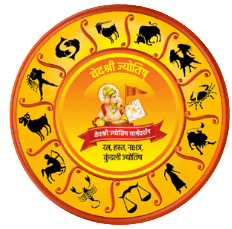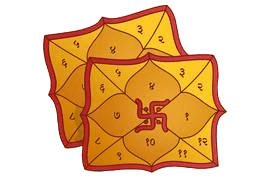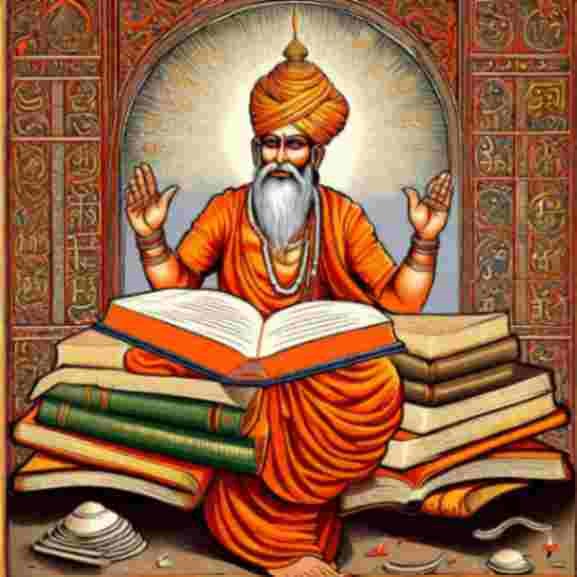Shani is the original name of the planet Saturn in Sanskrit.

Grahas in Vedic Astrology – the most important shani
Many astrology lovers have a negative attitude toward Saturn. Let’s just say that in many respects this is not fair. Let’s keep an open mind in our judgments and see what the scriptures and tradition have to say about this planet.
Shani as a container of graha
Shani is the original name of the planet Saturn in Sanskrit. In the article “Grahas in Vedic Astrology – the most important” we said that Shani is one of the five tara grahas.
The main function of the graha is to create an obstacle, namely: to prevent the light of distant stars (nakshatras) from reaching the Earth. This obstacle is the result of past karma that causes us to separate from our true divine nature.
Specifically, Shani shows the most vulnerable place in the horoscope, that sign and that bhava in the natal chart, for which we hold on to the last of our strength and cannot easily part, thinking that our entire existence depends on them!
Shani and the primary element of Vayu
Shani (Skt. शनि, Śani) is also called Shaneshchhara or Shanaishchara, which means “slow-moving”. Manda is another name meaning “slow”.
What is movement related to? This is vayu, air. It is no coincidence that Shani is responsible for the primary element of vayu.
Shani is also associated with very slow movement. Is it good or bad? If the air moves very slowly, that’s good.
People pray to Shanishchara that the winds created by him will always be slow, that they will always be pleasant, like a light sea breeze. Nobody wants typhoons and hurricanes in their life. Its slow movement is good for the world.
Like the other five Grahas, Shani is present inside our bodies. This is air, Vayu around the Anahata chakra in the chest area.
He is in our breath. It affects the heart and breathing. As long as we breathe, we are alive. That is why Shani is responsible for maintaining life, and longevity.
This power to constantly breathe is the blessing of Shani.
Shani colors and connection with Varuna deva
Shani is also called Nilavasas (Skt. नीलवासस्, Nīlavāsas), which means “in dark-colored robes.” Shani likes to dress in black or blue, or dark blue.
Neela is a dark blue color similar to indigo. A very powerful color associated with the color of the seas and oceans, especially when it is stormy.
Shani gains additional strength in direction ( digbala ) in the 7th house of the horoscope. When Shani is in the 7th bhava, he is no longer Shani. He is Varuna deva.
That is why Shani is the planet that connects us with Varuna deva, the lord of the seas and oceans.

Shani – master of time
The essence of Shani is that he is the lord of time, determining our life cycle.
He creates delays and obstacles to bring us back to the present moment. Are we able to enjoy the present moment or are we constantly overwhelmed by regrets and desires?
Saturn plays with us and seeks to slow our pace through life to remind us of what matters.
We should learn to slow down and see the transitory nature of things.
As the incarnation of Mahakaal himself, Shani rules over time, showing the transience of life in the material world. With this, Shchanidev teaches non-attachment to an illusory existence, directing to the search for eternal truth.
What at first seems like a curse turns out to be a blessing later on.
Shani or time reveals this truth.
Shani is an expert in Tapasya
An interesting fact is that Shani was not a graha from birth. He attained the status of graha by inconceivable Tapasya.
No one can perform Tapasya as Shani does. That is why one cannot do without the help of Shani to perform a long austerity.
It is Shani who creates the basis for the famous Tapasvi yoga, formed in the Rasha D-1 or Navamsha D-9 chart by the combination or mutual aspects of the three grahas – Shani, Shukra and Ketu.
If Shani is strong and benevolent, being in a tapasvi mood, then he is able to make the owner of this yoga like a sadhu.
The body is by nature very tamasic. And the soul is trapped in this body.
Tapas burns the tamas of the body, that very powerful shell around the soul. So, to perform tapas, you need to burn the tamas of this body. After that, it is possible to gain moksha.
Shani believes in punishment
Did you know that Shani is not interested in people going to hell?
The Puranas describe different levels of existence. Below Bhu-Loka, where we are, there are seven tala levels, ruled by Shani, and twenty-eight narka levels, ruled by Mangal.
Yama, as the ruler of the narca, seeks to drag the sinful soul into the hellish worlds. Shani saves the soul from getting into narcotics. There is a constant battle going on between Mangal and Shani.
Mangal, who controls the drug and Yama, really wants to take the soul to hell in order to subject it to as much punishment as possible. But Shani fights for her to the end.
He doesn’t want her sent there. He wants her sent to one of the tala levels. There he will make her work. “Whatever evil she has committed, she must be given a chance to improve,” Shani believes.
Shani believes in punishment here and now.
It is better to suffer here on Bhu-lok and burn off your negative karma than to go to the terrible drug levels.
So, we see that Shani has a positive side. The scriptures say: “He who reveres Shani in Brahma Muhurta will avoid getting into narka.”
Favorable and unfavourable positions and influences of Shani in the horoscope
Shani’s best position in the natal chart is in the 6th house. Because the sixth bhava is the place where Brahma is present. Shani worships Brahma. Shani also feels good in the 3rd and 11th bhava.
Since Shani is interested in suffering as much as possible in this life, he is responsible for illnesses, chronic suffering, and old age. That is why the sign where Shani is located is considered dirty.
This is the place of sickness. All diseases come from there. This is ageing before old age. This is chronic suffering throughout life.
If Shani is in the 10th bhava, the career represents chronic suffering.
If Shani is in the 9th bhava, then dharma is chronic suffering.
If Shani is in the 4th bhava, the mother or one’s own house will be the source of suffering.
The Dryshti or aspects of Shani, as well as his conjunctions with other Grahas, are extremely destructive. He will destroy everything he looks at. Its compounds destroy the indicators of those grahas.
Conclusion:
Shani is harsh, sometimes cruel, but fair. Moreover, as we have seen, he is merciful when viewed from a broader perspective on life.
Those trials and pain sent down by him are aimed at pushing a person to realise the frailty and illusory nature of this material world.
Difficult situations and harsh lessons in life are just a way to rid a person of a sense of self-importance that has captured him due to false self-identification.
[{"id":11127,"link":"https:\/\/www.vedashreejyotish.com\/what-happen-after-death\/","name":"what-happen-after-death","thumbnail":{"url":"https:\/\/www.vedashreejyotish.com\/wp-content\/uploads\/2024\/10\/\u0921\u093e\u0909\u0928\u0932\u094b\u0921-\u0915\u0930\u0947\u0902-1.jpeg","alt":"garude puran mrutu nantra kay"},"title":"\u091c\u093e\u0923\u0942\u0928 \u0918\u094d\u092f\u093e: \u092e\u0943\u0924\u094d\u092f\u0942 \u0939\u094b\u0924\u094b \u092e\u094d\u0939\u0923\u091c\u0947 \u0928\u0947\u092e\u0915\u0947 \u0915\u093e\u092f \u0939\u094b\u0924\u0947? \u092e\u0943\u0924\u094d\u092f\u0942\u0928\u0902\u0924\u0930 \u0915\u093e\u092f \u0939\u094b\u0924\u0947? what happen after death ?","excerpt":"","content":"\u092e\u0943\u0924\u094d\u092f\u0941\u0928\u0902\u0924\u0930 \u0915\u093e\u092f ? \u091c\u093e\u0923\u0942\u0928 \u0918\u094d\u092f\u093e: \u092e\u0943\u0924\u094d\u092f\u0942 \u0939\u094b\u0924\u094b \u092e\u094d\u0939\u0923\u091c\u0947 \u0928\u0947\u092e\u0915\u0947 \u0915\u093e\u092f \u0939\u094b\u0924\u0947? \u092e\u0943\u0924\u094d\u092f\u0942\u0928\u0902\u0924\u0930 \u0915\u093e\u092f \u0939\u094b\u0924\u0947? what happen after death \u092e\u0943\u0924\u094d\u092f\u0942\u091a\u094d\u092f\u093e \u0915\u094d\u0937\u0923\u0940 \u0906\u0923\u093f \u092e\u0943\u0924\u094d\u092f\u0941\u0928\u0902\u0924\u0930 \u0932\u0917\u0947\u091a \u0915\u093e\u092f \u0918\u0921\u0924\u0947","author":{"name":"vedashree jyotish","link":"https:\/\/www.vedashreejyotish.com\/author\/vedashree-jyotish\/"},"date":"Oct 30, 2024","dateGMT":"2024-10-30 06:19:00","modifiedDate":"2024-10-30 00:49:05","modifiedDateGMT":"2024-10-30 06:19:05","commentCount":"0","commentStatus":"open","categories":{"coma":"<a href=\"https:\/\/www.vedashreejyotish.com\/category\/article\/\" rel=\"category tag\">article<\/a>","space":"<a href=\"https:\/\/www.vedashreejyotish.com\/category\/article\/\" rel=\"category tag\">article<\/a>"},"taxonomies":{"post_tag":""},"readTime":{"min":8,"sec":15},"status":"publish"},{"id":11093,"link":"https:\/\/www.vedashreejyotish.com\/%e0%a4%b6%e0%a5%8d%e0%a4%b0%e0%a5%80-%e0%a4%b8%e0%a5%81%e0%a4%95%e0%a5%8d%e0%a4%a4-%e0%a4%ab%e0%a4%b2%e0%a4%b6%e0%a5%8d%e0%a4%b0%e0%a5%81%e0%a4%a4%e0%a5%80-%e0%a4%95%e0%a4%be-%e0%a4%ae%e0%a4%b9\/","name":"%e0%a4%b6%e0%a5%8d%e0%a4%b0%e0%a5%80-%e0%a4%b8%e0%a5%81%e0%a4%95%e0%a5%8d%e0%a4%a4-%e0%a4%ab%e0%a4%b2%e0%a4%b6%e0%a5%8d%e0%a4%b0%e0%a5%81%e0%a4%a4%e0%a5%80-%e0%a4%95%e0%a4%be-%e0%a4%ae%e0%a4%b9","thumbnail":{"url":"https:\/\/www.vedashreejyotish.com\/wp-content\/uploads\/2024\/04\/Ashtadhatu-Shri-Yantra-Pyramid-1.jpg","alt":""},"title":"\u0936\u094d\u0930\u0940 \u0938\u0941\u0915\u094d\u0924 \u092b\u0932\u0936\u094d\u0930\u0941\u0924\u0940 \u0915\u093e \u092e\u0939\u0924\u094d\u0924\u094d\u0935\u093e\u091a\u0940 \u0906\u0939\u0947.","excerpt":"","content":"\u092f\u0947\u0925\u0947 \u0936\u094d\u0930\u0940\u0938\u0942\u0915\u094d\u0924\u093e \u091a\u094d\u092f\u093e \u092b\u0932\u0936\u094d\u0930\u0941\u0924\u093f \u092c\u0926\u094d\u0926\u0932 \u0935\u093f\u0935\u0947\u091a\u0928 \u0906\u0939\u0947 \u0924\u0947 \u0936\u093e\u0902\u0924\u092a\u0923\u0947 \u0924\u0928\u094d\u092e\u092f\u0924\u093e\u0928\u0947 \u0935\u093e\u091a\u093e. \u0932\u0915\u094d\u0937\u094d\u092e\u0940 \u092e\u094d\u0939\u0923\u091c\u0947 \u0915\u093e\u092f \u0915\u0933\u0947\u0932:- \u0935\u093e\u091a\u0928\u093e\u0924 \u0906\u0932\u0947\u0932\u0902 \u091b\u093e\u0928\u0938\u0902, \u092e\u093e\u0930\u094d\u092e\u093f\u0915 \u0906\u0923\u093f \u092c\u0941\u0926\u094d\u0927\u0940\u0932\u093e \u091a\u093e\u0932\u0928\u093e \u0926\u0947\u0923\u093e\u0930\u0947 \u0905\u0938\u0947 \u092e\u0939\u093e\u0932\u0915\u094d\u0937\u094d\u092e\u0940","author":{"name":"vedashree jyotish","link":"https:\/\/www.vedashreejyotish.com\/author\/vedashree-jyotish\/"},"date":"Sep 22, 2024","dateGMT":"2024-09-22 12:43:22","modifiedDate":"2024-09-22 07:13:23","modifiedDateGMT":"2024-09-22 12:43:23","commentCount":"0","commentStatus":"open","categories":{"coma":"<a href=\"https:\/\/www.vedashreejyotish.com\/category\/article\/\" rel=\"category tag\">article<\/a>","space":"<a href=\"https:\/\/www.vedashreejyotish.com\/category\/article\/\" rel=\"category tag\">article<\/a>"},"taxonomies":{"post_tag":""},"readTime":{"min":5,"sec":13},"status":"publish"},{"id":11091,"link":"https:\/\/www.vedashreejyotish.com\/gurucharitra-ki-katha\/","name":"gurucharitra-ki-katha","thumbnail":{"url":"https:\/\/www.vedashreejyotish.com\/wp-content\/uploads\/2024\/09\/\u0921\u093e\u0909\u0928\u0932\u094b\u0921-\u0915\u0930\u0947\u0902.jpg","alt":"swami samartha"},"title":"\u0938\u0941\u0902\u0926\u0930 \u0926\u0924\u094d\u0924 \u0917\u0941\u0930\u0942\u0902\u091a\u0940 \u0915\u0925\u093e | Gurucharitra ki katha","excerpt":"","content":"\u0917\u0941\u0930\u0942\u091a\u0930\u093f\u0924\u094d\u0930\u093e\u091a\u0947 \u092a\u093e\u0930\u093e\u092f\u0923 \u0938\u094b\u0939\u0933\u093e \u0915\u0930\u093e\u092f\u091a\u093e \u0906\u0939\u0947 \u0924\u0930 \u0915\u0925\u093e\/ story \u0928\u093e\u0915\u0940 \u0935\u093e\u091a\u093e| gurucharitra ki katha \u0917\u094b\u0935\u093f\u0902\u0926\u0930\u093e\u0935\u093e\u0902\u091a\u094d\u092f\u093e \u0938\u092e\u093e\u0930\u093e\u0927\u0928\u0947\u091a \u0915\u094c\u0924\u0941\u0915 \u0939\u093e \u0917\u093e\u0935\u093e\u0924\u0932\u094d\u092f\u093e \u0917\u092a\u094d\u092a\u093e\u0902\u091a\u093e \u0928\u0947\u0939\u0947\u092e\u0940\u091a\u093e \u0935\u093f\u0937\u092f ,\u0928\u093f\u0924\u094d\u092f \u0905\u0928\u094d\u0928 \u0938\u0902\u0924\u0930\u094d\u092a\u0923 \u0939\u094b\u0924","author":{"name":"vedashree jyotish","link":"https:\/\/www.vedashreejyotish.com\/author\/vedashree-jyotish\/"},"date":"Sep 20, 2024","dateGMT":"2024-09-20 12:15:27","modifiedDate":"2024-09-20 06:45:29","modifiedDateGMT":"2024-09-20 12:15:29","commentCount":"0","commentStatus":"open","categories":{"coma":"<a href=\"https:\/\/www.vedashreejyotish.com\/category\/article\/\" rel=\"category tag\">article<\/a>, <a href=\"https:\/\/www.vedashreejyotish.com\/category\/lifestyle\/\" rel=\"category tag\">Lifestyle<\/a>","space":"<a href=\"https:\/\/www.vedashreejyotish.com\/category\/article\/\" rel=\"category tag\">article<\/a> <a href=\"https:\/\/www.vedashreejyotish.com\/category\/lifestyle\/\" rel=\"category tag\">Lifestyle<\/a>"},"taxonomies":{"post_tag":""},"readTime":{"min":2,"sec":10},"status":"publish"},{"id":11077,"link":"https:\/\/www.vedashreejyotish.com\/kalbhairav-astakam\/","name":"kalbhairav-astakam","thumbnail":{"url":"https:\/\/www.vedashreejyotish.com\/wp-content\/uploads\/2024\/09\/kal-bhairav-tandav-stotra_04c157380cc4d147af8ae6cab322b04b.webp","alt":"kalbhairav astakam"},"title":"Kalbhairav astakam | \u0915\u093e\u0932\u092d\u0948\u0930\u0935 \u0905\u0937\u094d\u091f\u0915\u092e: \u092d\u0915\u094d\u0924\u093f \u0914\u0930 \u0924\u0902\u0924\u094d\u0930 \u0915\u0940 \u0936\u0915\u094d\u0924\u093f","excerpt":"","content":"\u0915\u093e\u0932\u092d\u0948\u0930\u0935 \u0938\u094d\u0924\u094b\u0924\u094d\u0930: \u0905\u0930\u094d\u0925 \u0906\u0923\u093f \u092e\u0939\u0924\u094d\u0924\u094d\u0935 Kalbhairav astakam | \u0915\u093e\u0932\u092d\u0948\u0930\u0935 \u0938\u094d\u0924\u094b\u0924\u094d\u0930 \u0915\u093e\u0932\u092d\u0948\u0930\u0935 \u0939\u0947 \u092d\u0917\u0935\u093e\u0928 \u0936\u0902\u0915\u0930\u093e\u091a\u0947 \u090f\u0915 \u0909\u0917\u094d\u0930 \u0930\u0942\u092a \u0906\u0939\u0947, \u091c\u0947 \u0915\u093e\u0933\u093e\u091a\u0947 \u0906\u0923\u093f \u092e\u0943\u0924\u094d\u092f\u0942\u091a\u0947 \u0930\u0915\u094d\u0937\u0923\u0915\u0930\u094d\u0924\u093e \u092e\u093e\u0928\u0932\u0947 \u091c\u093e\u0924\u0947.","author":{"name":"vedashree jyotish","link":"https:\/\/www.vedashreejyotish.com\/author\/vedashree-jyotish\/"},"date":"Sep 9, 2024","dateGMT":"2024-09-09 15:50:27","modifiedDate":"2024-09-09 10:20:30","modifiedDateGMT":"2024-09-09 15:50:30","commentCount":"0","commentStatus":"open","categories":{"coma":"<a href=\"https:\/\/www.vedashreejyotish.com\/category\/stotra\/\" rel=\"category tag\">stotra<\/a>","space":"<a href=\"https:\/\/www.vedashreejyotish.com\/category\/stotra\/\" rel=\"category tag\">stotra<\/a>"},"taxonomies":{"post_tag":""},"readTime":{"min":4,"sec":23},"status":"publish"},{"id":10982,"link":"https:\/\/www.vedashreejyotish.com\/pukhraj-stone\/","name":"pukhraj-stone","thumbnail":{"url":"https:\/\/www.vedashreejyotish.com\/wp-content\/uploads\/2024\/02\/pukhraj.jpg","alt":""},"title":"The Mystical Powers of Pukhraj Stone: Enhancing Prosperity, Wisdom, and Spiritual Growth","excerpt":"","content":"Gemstones have fascinated people for centuries, not only for their beauty but also for their believed metaphysical properties. Pukhraj stone, also known as Yellow Sapphire,","author":{"name":"vedashree jyotish","link":"https:\/\/www.vedashreejyotish.com\/author\/vedashree-jyotish\/"},"date":"May 4, 2024","dateGMT":"2024-05-04 09:11:23","modifiedDate":"2024-05-04 03:42:11","modifiedDateGMT":"2024-05-04 09:12:11","commentCount":"0","commentStatus":"open","categories":{"coma":"<a href=\"https:\/\/www.vedashreejyotish.com\/category\/gemstone\/\" rel=\"category tag\">gemstone<\/a>, <a href=\"https:\/\/www.vedashreejyotish.com\/category\/%e0%a4%97%e0%a5%8d%e0%a4%b0%e0%a4%b9-%e0%a4%ab%e0%a4%b2\/\" rel=\"category tag\">\u0917\u094d\u0930\u0939 \u092b\u0932<\/a>","space":"<a href=\"https:\/\/www.vedashreejyotish.com\/category\/gemstone\/\" rel=\"category tag\">gemstone<\/a> <a href=\"https:\/\/www.vedashreejyotish.com\/category\/%e0%a4%97%e0%a5%8d%e0%a4%b0%e0%a4%b9-%e0%a4%ab%e0%a4%b2\/\" rel=\"category tag\">\u0917\u094d\u0930\u0939 \u092b\u0932<\/a>"},"taxonomies":{"post_tag":""},"readTime":{"min":2,"sec":1},"status":"publish"},{"id":10566,"link":"https:\/\/www.vedashreejyotish.com\/janiye-ratno-ki-jankari\/","name":"janiye-ratno-ki-jankari","thumbnail":{"url":"https:\/\/www.vedashreejyotish.com\/wp-content\/uploads\/2024\/03\/download.jpg","alt":""},"title":"Janiye Ratno Ki Jankari : \u0930\u0924\u094d\u0928 \u0915\u094b\u0928\u0938\u0947 \u0914\u0930 \u0915\u0948\u0938\u0947 \u0927\u093e\u0930\u0923 \u0915\u0930\u0947|","excerpt":"","content":"\u091c\u093e\u0928\u093f\u090f \u0930\u0924\u094d\u0928 \u0915\u0948\u0938\u0947 \u0939\u094b\u0924\u0947 \u0939\u0948 ? \u0930\u0924\u094d\u0928 \u0915\u093e \u0930\u0939\u0938\u094d\u092f | \u0914\u0937\u0927\u093f \u092e\u0923\u093f \u092e\u0902\u0924\u094d\u0930\u093e\u0923\u093e\u0902\u0902-\u0917\u094d\u0930\u0939 \u0928\u0915\u094d\u0937\u0924\u094d\u0930 \u0924\u093e\u0930\u093f\u0915\u093e | \u092d\u093e\u0917\u094d\u092f \u0915\u093e\u0932\u0947 \u092d\u0935\u0947\u0924\u094d\u0938\u093f\u0926\u094d\u0927\u093f: \u0905\u092d\u094d\u092f\u093e\u0917\u094d\u092f\u0902\u0902 \u0928\u093f\u0937\u094d\u092b\u0932\u0902\u0902 \u092d\u0935\u0947\u0924\u094d || \u0914\u0937\u0927\u093f ,","author":{"name":"vedashree jyotish","link":"https:\/\/www.vedashreejyotish.com\/author\/vedashree-jyotish\/"},"date":"Mar 23, 2024","dateGMT":"2024-03-23 09:49:18","modifiedDate":"2024-03-23 04:19:19","modifiedDateGMT":"2024-03-23 09:49:19","commentCount":"0","commentStatus":"open","categories":{"coma":"<a href=\"https:\/\/www.vedashreejyotish.com\/category\/gemstone\/\" rel=\"category tag\">gemstone<\/a>","space":"<a href=\"https:\/\/www.vedashreejyotish.com\/category\/gemstone\/\" rel=\"category tag\">gemstone<\/a>"},"taxonomies":{"post_tag":""},"readTime":{"min":16,"sec":2},"status":"publish"},{"id":10557,"link":"https:\/\/www.vedashreejyotish.com\/ketu-stotra-2\/","name":"ketu-stotra-2","thumbnail":{"url":"https:\/\/www.vedashreejyotish.com\/wp-content\/uploads\/2024\/02\/ketu.jpg","alt":""},"title":"Ketu Grah : \u0915\u0947\u0924\u0941 \u0938\u094d\u0924\u094b\u0924\u094d\u0930 \u0915\u093e \u092a\u093e\u0920 \u0915\u0930\u0928\u0947 \u0938\u0947 \u0939\u094b\u0917\u093e \u0906\u092a\u0915\u093e \u092d\u093e\u0917\u094d\u092f\u094b\u0926\u092f |","excerpt":"","content":"\u092f\u0926\u093f \u0906\u092a\u0915\u0940 \u0915\u0941\u0902\u0921\u0932\u0940 \u092e\u0947\u0902 \u0915\u0947\u0924\u0941 \u0917\u094d\u0930\u0939 \u0915\u093e \u0905\u0936\u0941\u092d \u092a\u094d\u0930\u092d\u093e\u0935 \u0939\u0948 \u0924\u094b \u0915\u0930\u0947 \u0915\u0947\u0924\u0941 \u0938\u094d\u0924\u094b\u0924\u094d\u0930 \u0915\u093e \u092a\u093e\u0920 \u0939\u094b\u0917\u093e \u0905\u0936\u0941\u092d \u092a\u094d\u0930\u092d\u093e\u0935 \u0915\u092e | \u0915\u0947\u0924\u0941 \u0938\u094d\u0924\u094b\u0924\u094d\u0930\/Ketu Stotra \u0915\u0947\u0924\u0941:","author":{"name":"vedashree jyotish","link":"https:\/\/www.vedashreejyotish.com\/author\/vedashree-jyotish\/"},"date":"Mar 18, 2024","dateGMT":"2024-03-18 07:03:19","modifiedDate":"2024-03-18 01:33:20","modifiedDateGMT":"2024-03-18 07:03:20","commentCount":"0","commentStatus":"open","categories":{"coma":"<a href=\"https:\/\/www.vedashreejyotish.com\/category\/stotra\/\" rel=\"category tag\">stotra<\/a>","space":"<a href=\"https:\/\/www.vedashreejyotish.com\/category\/stotra\/\" rel=\"category tag\">stotra<\/a>"},"taxonomies":{"post_tag":""},"readTime":{"min":0,"sec":19},"status":"publish"},{"id":10554,"link":"https:\/\/www.vedashreejyotish.com\/rahu-stotra\/","name":"rahu-stotra","thumbnail":{"url":"https:\/\/www.vedashreejyotish.com\/wp-content\/uploads\/2024\/03\/rahu-grah.jpg","alt":""},"title":"Rahu Grah : \u0930\u093e\u0939\u0942 \u0938\u094d\u0924\u094b\u0924\u094d\u0930 \u0915\u093e \u092a\u093e\u0920 \u0915\u0930\u0928\u0947 \u0938\u0947 \u092e\u093f\u0932\u0947\u0902\u0917\u0940 \u0906\u092a\u0915\u0947 \u092e\u0928 \u0915\u094b \u0936\u093e\u0902\u0924\u093f |","excerpt":"","content":"\u092f\u0926\u093f \u0906\u092a\u0915\u0947 \u091c\u0940\u0935\u0928 \u092e\u0947\u0902 \u0905\u0936\u093e\u0902\u0924\u093f \u0939\u0948 \u0924\u094b \u0915\u0930\u093f\u092f\u0947 \u0930\u093e\u0939\u0942 \u0938\u094d\u0924\u094b\u0924\u094d\u0930 \u0915\u093e \u092a\u093e\u0920 \u092e\u093f\u0932\u0947\u0902\u0917\u0940 \u0906\u092a\u0915\u0947 \u092e\u0928 \u0915\u094b \u0936\u093e\u0902\u0924\u093f | \u0930\u093e\u0939\u0941 \u0938\u094d\u0924\u094b\u0924\u094d\u0930\/Rahu Stotra \u0930\u093e\u0939\u0941\u0930\u094d\u0926\u093e\u0928\u0935\u092e\u0902\u0924\u094d\u0930\u0940 \u091a \u0938\u093f\u0902\u0939\u093f\u0915\u093e\u091a\u093f\u0924\u094d\u0924\u0928\u0928\u094d\u0926\u0928:\u0964 \u0905\u0930\u094d\u0927\u0915\u093e\u092f:","author":{"name":"vedashree jyotish","link":"https:\/\/www.vedashreejyotish.com\/author\/vedashree-jyotish\/"},"date":"Mar 18, 2024","dateGMT":"2024-03-18 06:47:41","modifiedDate":"2024-03-18 01:17:42","modifiedDateGMT":"2024-03-18 06:47:42","commentCount":"0","commentStatus":"open","categories":{"coma":"<a href=\"https:\/\/www.vedashreejyotish.com\/category\/stotra\/\" rel=\"category tag\">stotra<\/a>","space":"<a href=\"https:\/\/www.vedashreejyotish.com\/category\/stotra\/\" rel=\"category tag\">stotra<\/a>"},"taxonomies":{"post_tag":""},"readTime":{"min":0,"sec":26},"status":"publish"},{"id":10552,"link":"https:\/\/www.vedashreejyotish.com\/shani-stotra\/","name":"shani-stotra","thumbnail":{"url":"https:\/\/www.vedashreejyotish.com\/wp-content\/uploads\/2022\/11\/40f2ab48-b66a-49a2-ad30-d30ad1a8adea-removebg-preview.png","alt":"shani dev shani dev kundali"},"title":"Shani Grah : \u0936\u0928\u093f \u0938\u094d\u0924\u094b\u0924\u094d\u0930 \u0915\u093e \u092a\u093e\u0920 \u0915\u0930\u0928\u0947 \u0938\u0947 \u0939\u094b\u0917\u0947 \u0936\u0928\u093f \u0926\u0947\u0935 \u092a\u094d\u0930\u0938\u0928\u094d\u0928 |","excerpt":"","content":"\u092f\u0926\u093f \u0906\u092a\u0915\u0947 \u0936\u0928\u093f \u092d\u0917\u0935\u093e\u0928 \u0915\u0940 \u092e\u0939\u093e\u0926\u0936\u093e \u091a\u093e\u0932\u0942 \u0939\u0948 \u0924\u094b \u0915\u0930\u0947 \u0936\u0928\u093f \u0938\u094d\u0924\u094d\u0930\u094b\u0924\u094d\u0930 \u0915\u093e \u092a\u093e\u0920 \u0936\u0928\u093f \u092d\u0917\u0935\u093e\u0928 \u0926\u0947\u0902\u0917\u0947 \u092e\u0941\u0915\u094d\u0924\u093f ! \u0936\u0928\u093f \u0938\u094d\u0924\u094b\u0924\u094d\u0930\/Shani Stotra \u0928\u092e: \u0915\u0943\u0937\u094d\u0923\u093e\u092f \u0928\u0940\u0932\u093e\u092f","author":{"name":"vedashree jyotish","link":"https:\/\/www.vedashreejyotish.com\/author\/vedashree-jyotish\/"},"date":"Mar 18, 2024","dateGMT":"2024-03-18 06:19:44","modifiedDate":"2024-03-18 00:49:45","modifiedDateGMT":"2024-03-18 06:19:45","commentCount":"0","commentStatus":"open","categories":{"coma":"<a href=\"https:\/\/www.vedashreejyotish.com\/category\/stotra\/\" rel=\"category tag\">stotra<\/a>","space":"<a href=\"https:\/\/www.vedashreejyotish.com\/category\/stotra\/\" rel=\"category tag\">stotra<\/a>"},"taxonomies":{"post_tag":""},"readTime":{"min":0,"sec":45},"status":"publish"},{"id":10549,"link":"https:\/\/www.vedashreejyotish.com\/shukra-grah\/","name":"shukra-grah","thumbnail":{"url":"https:\/\/www.vedashreejyotish.com\/wp-content\/uploads\/2024\/03\/shukr-bhagvan.jpg","alt":""},"title":"Shukra Grah : \u0936\u0941\u0915\u094d\u0930 \u0938\u094d\u0924\u094b\u0924\u094d\u0930 \u0915\u093e \u092a\u093e\u0920 \u0915\u0930\u0928\u0947 \u0938\u0947 \u0939\u094b\u0917\u0940 \u0906\u092a\u0915\u0940 \u0927\u0928 \u0935\u0943\u0926\u094d\u0927\u093f |","excerpt":"","content":"\u092f\u0926\u093f \u0906\u092a\u0915\u0947 \u092a\u093e\u0938 \u0938\u0941\u0916, \u0938\u092e\u0943\u0926\u094d\u0927\u093f , \u0927\u0928 , \u0927\u093e\u0928\u094d\u092f \u0915\u0940 \u0915\u092e\u0940 \u0939\u0948 \u0924\u094b \u0915\u0930\u0947 \u0936\u0941\u0915\u094d\u0930 \u0938\u094d\u0924\u094b\u0924\u094d\u0930 \u0915\u093e \u092a\u093e\u0920 \u0939\u094b\u0917\u0940 \u0927\u0928 \u0935\u0943\u0926\u094d\u0927\u093f ! \u0936\u0941\u0915\u094d\u0930 \u0938\u094d\u0924\u094b\u0924\u094d\u0930\/Shukra Stotra","author":{"name":"vedashree jyotish","link":"https:\/\/www.vedashreejyotish.com\/author\/vedashree-jyotish\/"},"date":"Mar 18, 2024","dateGMT":"2024-03-18 06:01:06","modifiedDate":"2024-03-18 00:31:07","modifiedDateGMT":"2024-03-18 06:01:07","commentCount":"0","commentStatus":"open","categories":{"coma":"<a href=\"https:\/\/www.vedashreejyotish.com\/category\/stotra\/\" rel=\"category tag\">stotra<\/a>","space":"<a href=\"https:\/\/www.vedashreejyotish.com\/category\/stotra\/\" rel=\"category tag\">stotra<\/a>"},"taxonomies":{"post_tag":""},"readTime":{"min":0,"sec":44},"status":"publish"},{"id":10547,"link":"https:\/\/www.vedashreejyotish.com\/guru-grah-2\/","name":"guru-grah-2","thumbnail":{"url":"https:\/\/www.vedashreejyotish.com\/wp-content\/uploads\/2024\/03\/guru-bhagvan.jpg","alt":""},"title":"Guru Grah : \u0917\u0941\u0930\u0941 \u0938\u094d\u0924\u094d\u0930\u094b\u0924\u094d\u0930 \u0915\u093e \u092a\u093e\u0920 \u0915\u0930\u0928\u0947 \u0938\u0947 \u092e\u093f\u0932\u0947\u0917\u093e \u0906\u092a\u0915\u094b \u0915\u093e\u0930\u094d\u092f\u0915\u094d\u0937\u0947\u0924\u094d\u0930 \u092e\u0947\u0902 \u0932\u093e\u092d !!","excerpt":"","content":"\u092f\u0926\u093f \u0906\u092a\u0915\u094b \u0915\u093e\u0930\u094d\u092f\u0915\u094d\u0937\u0947\u0924\u094d\u0930 \u092e\u0947\u0902 \u0932\u093e\u092d \u0928\u0939\u0940\u0902 \u0939\u094b \u0930\u0939\u093e \u0939\u0948 \u0924\u094b \u0915\u0930\u093f\u092f\u0947 \u0917\u0941\u0930\u0941 \u0938\u094d\u0924\u094d\u0930\u094b\u0924\u094d\u0930 \u0915\u093e \u092a\u093e\u0920 \u092e\u093f\u0932\u0947\u0917\u093e \u0932\u093e\u092d ! \u0917\u0941\u0930\u0941 \u0938\u094d\u0924\u094b\u0924\u094d\u0930 \u0915\u094d\u0930\u094c\u0902 \u0936\u0915\u094d\u0930\u093e\u0926\u093f \u0926\u0947\u0935\u0948: \u092a\u0930\u093f\u092a\u0942\u091c\u093f\u0924\u094b\u0938\u093f \u0924\u094d\u0935\u0902","author":{"name":"vedashree jyotish","link":"https:\/\/www.vedashreejyotish.com\/author\/vedashree-jyotish\/"},"date":"Mar 18, 2024","dateGMT":"2024-03-18 05:47:23","modifiedDate":"2024-03-18 00:17:24","modifiedDateGMT":"2024-03-18 05:47:24","commentCount":"0","commentStatus":"open","categories":{"coma":"<a href=\"https:\/\/www.vedashreejyotish.com\/category\/stotra\/\" rel=\"category tag\">stotra<\/a>","space":"<a href=\"https:\/\/www.vedashreejyotish.com\/category\/stotra\/\" rel=\"category tag\">stotra<\/a>"},"taxonomies":{"post_tag":""},"readTime":{"min":0,"sec":41},"status":"publish"},{"id":10545,"link":"https:\/\/www.vedashreejyotish.com\/budh-grah-2\/","name":"budh-grah-2","thumbnail":{"url":"https:\/\/www.vedashreejyotish.com\/wp-content\/uploads\/2024\/03\/budh-bhgvan.jpg","alt":""},"title":"Budh Grah : \u092c\u0941\u0927 \u0938\u094d\u0924\u094b\u0924\u094d\u0930 \u0915\u093e \u092a\u093e\u0920 \u0915\u0930\u0928\u0947 \u0938\u0947 \u092c\u095d\u0947\u0917\u0940 \u0906\u092a\u0915\u0940 \u092c\u0941\u0926\u094d\u0927\u093f","excerpt":"","content":"\u092f\u0926\u093f \u0906\u092a\u0915\u0940 \u092c\u0941\u0926\u094d\u0927\u093f \u0915\u092e\u091c\u094b\u0930 \u0939\u0948 \u0924\u094b \u0915\u0930\u0947 \u0907\u0938 \u092c\u0941\u0927 \u0938\u094d\u0924\u094b\u0924\u094d\u0930 \u0915\u093e \u092a\u093e\u0920 \u092e\u093f\u0932\u0947\u0917\u0940 \u0905\u092a\u093e\u0930 \u0938\u092b\u0932\u0924\u093e | \u092c\u0941\u0927 \u0938\u094d\u0924\u094b\u0924\u094d\u0930 \u092a\u0940\u0924\u093e\u092e\u094d\u092c\u0930: \u092a\u0940\u0924\u0935\u092a\u0941 \u0915\u093f\u0930\u0940\u091f\u0940, \u091a\u0924\u0941\u0930\u094d\u092d\u0941\u091c\u094b \u0926\u0947\u0935\u0926\u0941:\u0916\u093e\u092a\u0939\u0930\u094d\u0924\u093e \u0964 \u0927\u0930\u094d\u092e\u0938\u094d\u092f","author":{"name":"vedashree jyotish","link":"https:\/\/www.vedashreejyotish.com\/author\/vedashree-jyotish\/"},"date":"Mar 15, 2024","dateGMT":"2024-03-15 12:44:32","modifiedDate":"2024-03-15 07:14:33","modifiedDateGMT":"2024-03-15 12:44:33","commentCount":"0","commentStatus":"open","categories":{"coma":"<a href=\"https:\/\/www.vedashreejyotish.com\/category\/stotra\/\" rel=\"category tag\">stotra<\/a>","space":"<a href=\"https:\/\/www.vedashreejyotish.com\/category\/stotra\/\" rel=\"category tag\">stotra<\/a>"},"taxonomies":{"post_tag":""},"readTime":{"min":0,"sec":53},"status":"publish"}]
[{"id":11145,"link":"https:\/\/www.vedashreejyotish.com\/hora-kundali-fal\/","name":"hora-kundali-fal","thumbnail":{"url":"https:\/\/www.vedashreejyotish.com\/wp-content\/uploads\/2024\/11\/unnamed.jpg","alt":""},"title":"\u0939\u094b\u0930\u093e \u0915\u0941\u0902\u0921\u0932\u0940 \u0915\u093e \u092b\u0932\u093e\u0926\u0947\u0936 \u0915\u0948\u0938\u0947 \u0915\u0930\u0947 ? | Hora kundali fal.","excerpt":"","content":"\u0939\u094b\u0930\u093e \u0915\u0941\u0902\u0921\u0932\u0940 \u0915\u093e \u092b\u0932\u093e\u0926\u0947\u0936 \u0915\u0948\u0938\u0947 \u0915\u0930\u0947 ? | Hora kundali fal. \u0939\u094b\u0930\u093e \u0915\u0941\u0902\u0921\u0932\u0940 \u092e\u0947\u0902 \u0930\u093e\u0936\u093f \u0915\u0947 \u0926\u094b \u092d\u093e\u0917 \u0915\u0930\u0928\u0947 \u092a\u0930 \u0939\u0930 \u0935\u093f\u092d\u093e\u0917 15 \u0905\u0902\u0936 \u0915\u093e","author":{"name":"vedashree jyotish","link":"https:\/\/www.vedashreejyotish.com\/author\/vedashree-jyotish\/"},"date":"Nov 25, 2024","dateGMT":"2024-11-25 07:50:56","modifiedDate":"2024-11-25 02:20:57","modifiedDateGMT":"2024-11-25 07:50:57","commentCount":"0","commentStatus":"open","categories":{"coma":"<a href=\"https:\/\/www.vedashreejyotish.com\/category\/%e0%a4%97%e0%a5%8d%e0%a4%b0%e0%a4%b9-%e0%a4%ab%e0%a4%b2\/\" rel=\"category tag\">\u0917\u094d\u0930\u0939 \u092b\u0932<\/a>","space":"<a href=\"https:\/\/www.vedashreejyotish.com\/category\/%e0%a4%97%e0%a5%8d%e0%a4%b0%e0%a4%b9-%e0%a4%ab%e0%a4%b2\/\" rel=\"category tag\">\u0917\u094d\u0930\u0939 \u092b\u0932<\/a>"},"taxonomies":{"post_tag":""},"readTime":{"min":8,"sec":26},"status":"publish"},{"id":11143,"link":"https:\/\/www.vedashreejyotish.com\/how-to-read-hora-kundali\/","name":"how-to-read-hora-kundali","thumbnail":{"url":"https:\/\/www.vedashreejyotish.com\/wp-content\/uploads\/2022\/12\/kundali1-1547094032.jpg","alt":"\u0915\u093e\u0932\u0938\u0930\u094d\u092a \u092f\u094b\u0917 \u0915\u093e\u092f \u0906\u0939\u0947? kalsarpa yog"},"title":"How to read Hora kundali | \u0939\u094b\u0930\u093e \u0915\u0941\u0902\u0921\u0932\u0940 \u0915\u093e \u092e\u0939\u0924\u094d\u0935 \u0915\u0948\u0938\u0947 \u0926\u0947\u0916\u0947, \u0909\u0926\u093e\u0939\u0930\u0923 \u0915\u0947 \u0938\u093e\u0925.","excerpt":"","content":"\u091c\u0928\u094d\u092e \u0915\u0941\u0902\u0921\u0932\u0940 \u0924\u0925\u093e \u0939\u094b\u0930\u093e \u0915\u0941\u0902\u0921\u0932\u0940 \u0915\u093e \u092e\u0939\u0924\u094d\u0935 \u0915\u0948\u0938\u0947 \u0926\u0947\u0916\u0947, \u0909\u0926\u093e\u0939\u0930\u0923 \u0915\u0947 \u0938\u093e\u0925 | How to read Hora kundali \u092a\u094d\u0930\u0924\u094d\u092f\u0947\u0915 \u0930\u093e\u0936\u093f \u092e\u0947\u0902 \u0926\u094b \u0939\u094b\u0930\u093e \u0939\u094b\u0924\u0940 \u0939\u0948","author":{"name":"vedashree jyotish","link":"https:\/\/www.vedashreejyotish.com\/author\/vedashree-jyotish\/"},"date":"Nov 25, 2024","dateGMT":"2024-11-25 07:07:22","modifiedDate":"2024-11-25 01:37:23","modifiedDateGMT":"2024-11-25 07:07:23","commentCount":"0","commentStatus":"open","categories":{"coma":"<a href=\"https:\/\/www.vedashreejyotish.com\/category\/%e0%a4%97%e0%a5%8d%e0%a4%b0%e0%a4%b9-%e0%a4%ab%e0%a4%b2\/\" rel=\"category tag\">\u0917\u094d\u0930\u0939 \u092b\u0932<\/a>","space":"<a href=\"https:\/\/www.vedashreejyotish.com\/category\/%e0%a4%97%e0%a5%8d%e0%a4%b0%e0%a4%b9-%e0%a4%ab%e0%a4%b2\/\" rel=\"category tag\">\u0917\u094d\u0930\u0939 \u092b\u0932<\/a>"},"taxonomies":{"post_tag":""},"readTime":{"min":4,"sec":0},"status":"publish"},{"id":11139,"link":"https:\/\/www.vedashreejyotish.com\/what-is-vargotam-in-vedic-astrology\/","name":"what-is-vargotam-in-vedic-astrology","thumbnail":{"url":"https:\/\/www.vedashreejyotish.com\/wp-content\/uploads\/2024\/11\/sddefault.jpg","alt":"kundali chart"},"title":"\u0935\u0930\u094d\u0917\u094b\u0924\u094d\u0924\u092e \u0917\u0943\u0939 \u0915\u093f\u0938\u0947 \u0915\u0939\u0924\u0947 \u0939\u0948\u0902? | what is vargotam in vedic astrology ?","excerpt":"","content":"\u0935\u0930\u094d\u0917\u094b\u0924\u094d\u0924\u092e \u0917\u0943\u0939 \u0915\u093f\u0938\u0947 \u0915\u0939\u0924\u0947 \u0939\u0948\u0902? \u092f\u0926\u093f \u0915\u094b\u0908 \u0917\u0943\u0939 \u0932\u0917\u094d\u0928 \u0915\u0941\u0902\u0921\u0932\u0940 \u092e\u0947\u0902 \u0928\u0940\u091a \u0905\u0935\u0938\u094d\u0925\u093e \u092e\u0947\u0902 \u0939\u0948 \u0924\u0925\u093e \u0928\u0935\u092e\u093e\u0902\u0936 \u0915\u0941\u0902\u0921\u0932\u0940 \u0915\u0947 \u0915\u0940\u0938 \u0930\u093e\u0936\u093f \u092e\u0947\u0902 \u0939\u0948 \u0924\u094b \u0915\u094d\u092f\u093e","author":{"name":"vedashree jyotish","link":"https:\/\/www.vedashreejyotish.com\/author\/vedashree-jyotish\/"},"date":"Nov 25, 2024","dateGMT":"2024-11-25 06:35:29","modifiedDate":"2024-11-25 01:05:30","modifiedDateGMT":"2024-11-25 06:35:30","commentCount":"0","commentStatus":"open","categories":{"coma":"<a href=\"https:\/\/www.vedashreejyotish.com\/category\/%e0%a4%97%e0%a5%8d%e0%a4%b0%e0%a4%b9-%e0%a4%ab%e0%a4%b2\/\" rel=\"category tag\">\u0917\u094d\u0930\u0939 \u092b\u0932<\/a>","space":"<a href=\"https:\/\/www.vedashreejyotish.com\/category\/%e0%a4%97%e0%a5%8d%e0%a4%b0%e0%a4%b9-%e0%a4%ab%e0%a4%b2\/\" rel=\"category tag\">\u0917\u094d\u0930\u0939 \u092b\u0932<\/a>"},"taxonomies":{"post_tag":""},"readTime":{"min":2,"sec":58},"status":"publish"},{"id":11127,"link":"https:\/\/www.vedashreejyotish.com\/what-happen-after-death\/","name":"what-happen-after-death","thumbnail":{"url":"https:\/\/www.vedashreejyotish.com\/wp-content\/uploads\/2024\/10\/\u0921\u093e\u0909\u0928\u0932\u094b\u0921-\u0915\u0930\u0947\u0902-1.jpeg","alt":"garude puran mrutu nantra kay"},"title":"\u091c\u093e\u0923\u0942\u0928 \u0918\u094d\u092f\u093e: \u092e\u0943\u0924\u094d\u092f\u0942 \u0939\u094b\u0924\u094b \u092e\u094d\u0939\u0923\u091c\u0947 \u0928\u0947\u092e\u0915\u0947 \u0915\u093e\u092f \u0939\u094b\u0924\u0947? \u092e\u0943\u0924\u094d\u092f\u0942\u0928\u0902\u0924\u0930 \u0915\u093e\u092f \u0939\u094b\u0924\u0947? what happen after death ?","excerpt":"","content":"\u092e\u0943\u0924\u094d\u092f\u0941\u0928\u0902\u0924\u0930 \u0915\u093e\u092f ? \u091c\u093e\u0923\u0942\u0928 \u0918\u094d\u092f\u093e: \u092e\u0943\u0924\u094d\u092f\u0942 \u0939\u094b\u0924\u094b \u092e\u094d\u0939\u0923\u091c\u0947 \u0928\u0947\u092e\u0915\u0947 \u0915\u093e\u092f \u0939\u094b\u0924\u0947? \u092e\u0943\u0924\u094d\u092f\u0942\u0928\u0902\u0924\u0930 \u0915\u093e\u092f \u0939\u094b\u0924\u0947? what happen after death \u092e\u0943\u0924\u094d\u092f\u0942\u091a\u094d\u092f\u093e \u0915\u094d\u0937\u0923\u0940 \u0906\u0923\u093f \u092e\u0943\u0924\u094d\u092f\u0941\u0928\u0902\u0924\u0930 \u0932\u0917\u0947\u091a \u0915\u093e\u092f \u0918\u0921\u0924\u0947","author":{"name":"vedashree jyotish","link":"https:\/\/www.vedashreejyotish.com\/author\/vedashree-jyotish\/"},"date":"Oct 30, 2024","dateGMT":"2024-10-30 06:19:00","modifiedDate":"2024-10-30 00:49:05","modifiedDateGMT":"2024-10-30 06:19:05","commentCount":"0","commentStatus":"open","categories":{"coma":"<a href=\"https:\/\/www.vedashreejyotish.com\/category\/article\/\" rel=\"category tag\">article<\/a>","space":"<a href=\"https:\/\/www.vedashreejyotish.com\/category\/article\/\" rel=\"category tag\">article<\/a>"},"taxonomies":{"post_tag":""},"readTime":{"min":8,"sec":15},"status":"publish"},{"id":11124,"link":"https:\/\/www.vedashreejyotish.com\/life-after-death\/","name":"life-after-death","thumbnail":{"url":"https:\/\/www.vedashreejyotish.com\/wp-content\/uploads\/2024\/10\/\u0921\u093e\u0909\u0928\u0932\u094b\u0921-\u0915\u0930\u0947\u0902.jpeg","alt":"life after death"},"title":"\u092e\u0943\u0924\u094d\u092f\u0941 \u092e\u094d\u0939\u0923\u091c\u0947 \u0915\u093e\u092f ? \u092e\u0943\u0924\u094d\u092f\u0942\u0928\u0902\u0924\u0930 \u0915\u093e\u092f \u0939\u094b\u0924\u0947 ? life after death","excerpt":"","content":"\u092e\u0943\u0924\u094d\u092f\u0941 \u092e\u094d\u0939\u0923\u091c\u0947 '\u0905\u0935\u0938\u094d\u0925\u093e\u0902\u0924\u0930' \u092e\u0943\u0924\u094d\u092f\u0941 \u092e\u094d\u0939\u0923\u091c\u0947 \u0915\u093e\u092f ? \u092e\u0943\u0924\u094d\u092f\u0942\u0928\u0902\u0924\u0930 \u0915\u093e\u092f \u0939\u094b\u0924\u0947 ? \u092e\u0943\u0924\u094d\u092f\u0942\u091a\u0947 \u0928\u093e\u0935 \u0915\u093e\u0922\u0924\u093e\u091a \u0938\u0930\u094d\u0935\u0938\u093e\u092e\u093e\u0928\u094d\u092f \u092e\u0928\u0941\u0937\u094d\u092f\u093e\u091a\u094d\u092f\u093e \u0905\u0902\u0917\u093e\u0935\u0930 \u092d\u0940\u0924\u0940\u0928\u0947 \u0936\u0939\u093e\u0930\u0947 \u092f\u0947\u0924\u093e\u0924 ! \u0915\u093e\u0930\u0923 \u092e\u0943\u0924\u094d\u092f\u0941 \u092e\u094d\u0939\u0923\u091c\u0947 '\u0938\u0930\u094d\u0935\u0938\u094d\u0935\u093e\u091a\u093e","author":{"name":"vedashree jyotish","link":"https:\/\/www.vedashreejyotish.com\/author\/vedashree-jyotish\/"},"date":"Oct 30, 2024","dateGMT":"2024-10-30 05:39:51","modifiedDate":"2024-10-30 00:09:53","modifiedDateGMT":"2024-10-30 05:39:53","commentCount":"0","commentStatus":"open","categories":{"coma":"<a href=\"https:\/\/www.vedashreejyotish.com\/category\/lifestyle\/astrology\/\" rel=\"category tag\">astrology<\/a>","space":"<a href=\"https:\/\/www.vedashreejyotish.com\/category\/lifestyle\/astrology\/\" rel=\"category tag\">astrology<\/a>"},"taxonomies":{"post_tag":""},"readTime":{"min":4,"sec":35},"status":"publish"},{"id":11121,"link":"https:\/\/www.vedashreejyotish.com\/problem-solving-solution\/","name":"problem-solving-solution","thumbnail":{"url":"https:\/\/www.vedashreejyotish.com\/wp-content\/uploads\/2024\/10\/\u0921\u093e\u0909\u0928\u0932\u094b\u0921-\u0915\u0930\u0947\u0902.png","alt":"problem solving"},"title":"Problem Solving Solution | \u0938\u092e\u0938\u094d\u092f\u093e\u0913\u0902 \u0938\u0947 \u092e\u0941\u0915\u094d\u0924 \u0939\u094b\u0928\u0947 \u0915\u0947 \u0906\u0938\u093e\u0928 \u0924\u0930\u0940\u0915\u0947 !","excerpt":"","content":"\u0938\u092e\u0938\u094d\u092f\u093e\u0913\u0902 \u0938\u0947 \u092e\u0941\u0915\u094d\u0924 \u0939\u094b\u0928\u0947 \u0915\u0947 \u0906\u0938\u093e\u0928 \u0924\u0930\u0940\u0915\u0947\u0903 \u0935\u094d\u092f\u093e\u0935\u0939\u093e\u0930\u093f\u0915 \u0938\u092e\u093e\u0927\u093e\u0928 | Problem Solving Solution \u091c\u0940\u0935\u0928 \u0915\u092d\u0940-\u0915\u092d\u0940 \u092d\u093e\u0930\u0940 \u092e\u0939\u0938\u0942\u0938 \u0915\u0930 \u0938\u0915\u0924\u093e \u0939\u0948, \u091c\u0948\u0938\u0947 \u0915\u093f \u0906\u092a \u0915\u0940\u091a\u0921\u093c \u092d\u0930\u0947","author":{"name":"vedashree jyotish","link":"https:\/\/www.vedashreejyotish.com\/author\/vedashree-jyotish\/"},"date":"Oct 28, 2024","dateGMT":"2024-10-29 05:12:34","modifiedDate":"2024-10-28 23:45:20","modifiedDateGMT":"2024-10-29 05:15:20","commentCount":"0","commentStatus":"open","categories":{"coma":"<a href=\"https:\/\/www.vedashreejyotish.com\/category\/lifestyle\/astrology\/\" rel=\"category tag\">astrology<\/a>","space":"<a href=\"https:\/\/www.vedashreejyotish.com\/category\/lifestyle\/astrology\/\" rel=\"category tag\">astrology<\/a>"},"taxonomies":{"post_tag":""},"readTime":{"min":4,"sec":9},"status":"publish"},{"id":11111,"link":"https:\/\/www.vedashreejyotish.com\/7-important-resolutions\/","name":"7-important-resolutions","thumbnail":{"url":"https:\/\/www.vedashreejyotish.com\/wp-content\/uploads\/2024\/07\/5b5d9888-c7e4-4059-b611-ded0b93eb05f-1_all_5954-scaled.jpg","alt":""},"title":"\u0938\u093e\u0927\u0915\u093e\u0902\u0938\u093e\u0920\u0940 7 \u092e\u0939\u0924\u094d\u0924\u094d\u0935\u093e\u091a\u0947 resolutions: \u0924\u0941\u092e\u091a\u0902 \u091c\u0940\u0935\u0928 \u092c\u0926\u0932\u0923\u094d\u092f\u093e\u0938\u093e\u0920\u0940!","excerpt":"","content":"\u0938\u093e\u0927\u0915\u093e\u0902\u0938\u093e\u0920\u0940 7 \u092e\u0939\u0924\u094d\u0924\u094d\u0935\u093e\u091a\u0947 resolutions: \u0924\u0941\u092e\u091a\u0902 \u091c\u0940\u0935\u0928 \u092c\u0926\u0932\u0923\u094d\u092f\u093e\u0938\u093e\u0920\u0940! \ud83d\udea9 \u0938\u093e\u0927\u0915\u093e\u0928\u0947 \u0916\u093e\u0932\u0940\u0932 \u0938\u093e\u0924 \u0917\u094b\u0937\u094d\u091f\u0940 \u091c\u0940\u0935\u0928\u093e\u0924 \u0906\u0924\u094d\u092e\u0938\u093e\u0924 \u0915\u0947\u0932\u094d\u092f\u093e\u0938 \u092a\u0930\u093f\u0935\u0930\u094d\u0924\u0928 \u0939\u094b\u0908\u0932. \ud83d\udea9 \u091c\u0928\u094d\u092e \u092e\u093f\u0933\u093e\u0932\u093e \u0906\u0923\u093f \u0928\u093f\u0918\u0942\u0928 \u0917\u0947\u0932\u093e. \u0938\u0943\u0937\u094d\u091f\u0940 \u092c\u0928\u0932\u0940","author":{"name":"vedashree jyotish","link":"https:\/\/www.vedashreejyotish.com\/author\/vedashree-jyotish\/"},"date":"Oct 13, 2024","dateGMT":"2024-10-14 05:16:57","modifiedDate":"2024-10-21 02:21:01","modifiedDateGMT":"2024-10-21 07:51:01","commentCount":"0","commentStatus":"open","categories":{"coma":"<a href=\"https:\/\/www.vedashreejyotish.com\/category\/lifestyle\/astrology\/\" rel=\"category tag\">astrology<\/a>","space":"<a href=\"https:\/\/www.vedashreejyotish.com\/category\/lifestyle\/astrology\/\" rel=\"category tag\">astrology<\/a>"},"taxonomies":{"post_tag":""},"readTime":{"min":4,"sec":41},"status":"publish"},{"id":11102,"link":"https:\/\/www.vedashreejyotish.com\/%e0%a4%98%e0%a4%9f%e0%a4%b8%e0%a5%8d%e0%a4%a5%e0%a4%be%e0%a4%aa%e0%a4%a8%e0%a5%87%e0%a4%9a%e0%a5%87-%e0%a4%b6%e0%a5%81%e0%a4%ad-%e0%a4%ae%e0%a5%81%e0%a4%b9%e0%a5%82%e0%a4%b0%e0%a5%8d%e0%a4%a4\/","name":"%e0%a4%98%e0%a4%9f%e0%a4%b8%e0%a5%8d%e0%a4%a5%e0%a4%be%e0%a4%aa%e0%a4%a8%e0%a5%87%e0%a4%9a%e0%a5%87-%e0%a4%b6%e0%a5%81%e0%a4%ad-%e0%a4%ae%e0%a5%81%e0%a4%b9%e0%a5%82%e0%a4%b0%e0%a5%8d%e0%a4%a4","thumbnail":{"url":"https:\/\/www.vedashreejyotish.com\/wp-content\/uploads\/2024\/04\/dd.jpg","alt":""},"title":"\u0918\u091f\u0938\u094d\u0925\u093e\u092a\u0928\u0947\u091a\u0947 \u0936\u0941\u092d \u092e\u0941\u0939\u0942\u0930\u094d\u0924","excerpt":"","content":"\u0918\u091f\u0938\u094d\u0925\u093e\u092a\u0928\u0947\u091a\u0947 \u0936\u0941\u092d \u092e\u0941\u0939\u0942\u0930\u094d\u0924 !!! \u0917\u0941\u0930\u0941\u0935\u093e\u0930 \u0926\u093f. \u0966\u0969\/\u0967\u0966\/\u0968\u096a \u0930\u094b\u091c\u0940 \u0918\u091f\u0938\u094d\u0925\u093e\u092a\u0928\u093e \u0906\u0939\u0947.\u0917\u0941\u0930\u0941\u0935\u093e\u0930 \u0926\u093f.\u0966\u0969\/\u0967\u0966\/\u0968\u0966\u0968\u096a \u0930\u094b\u091c\u0940 \u0938\u0942\u0930\u094d\u092f\u094b\u0926\u092f\u093e\u092a\u093e\u0938\u0942\u0928 \u0926\u093f\u0935\u0938\u092d\u0930 \u092a\u094d\u0930\u0924\u093f\u092a\u0926\u093e \u0924\u093f\u0925\u0940 \u0906\u0939\u0947.\u0917\u0941\u0930\u0941\u0935\u093e\u0930 \u0926\u093f. \u0966\u0969\/\u0967\u0966\/\u0968\u096a \u0930\u094b\u091c\u0940 \u0939\u0938\u094d\u0924 \u0928\u0915\u094d\u0937\u0924\u094d\u0930 \u0926\u0941.\u0966\u0969:\u0969\u0967 \u092a\u0930\u094d\u092f\u0902\u0924 \u0906\u0939\u0946","author":{"name":"vedashree jyotish","link":"https:\/\/www.vedashreejyotish.com\/author\/vedashree-jyotish\/"},"date":"Oct 3, 2024","dateGMT":"2024-10-03 11:00:19","modifiedDate":"2024-10-03 06:21:55","modifiedDateGMT":"2024-10-03 11:51:55","commentCount":"0","commentStatus":"open","categories":{"coma":"<a href=\"https:\/\/www.vedashreejyotish.com\/category\/lifestyle\/astrology\/\" rel=\"category tag\">astrology<\/a>","space":"<a href=\"https:\/\/www.vedashreejyotish.com\/category\/lifestyle\/astrology\/\" rel=\"category tag\">astrology<\/a>"},"taxonomies":{"post_tag":""},"readTime":{"min":6,"sec":40},"status":"publish"},{"id":11099,"link":"https:\/\/www.vedashreejyotish.com\/%e0%a4%b6%e0%a4%be%e0%a4%aa%e0%a4%bf%e0%a4%a4-%e0%a4%95%e0%a5%81%e0%a4%82%e0%a4%a1%e0%a4%b2%e0%a5%80-shapit-kundali\/","name":"%e0%a4%b6%e0%a4%be%e0%a4%aa%e0%a4%bf%e0%a4%a4-%e0%a4%95%e0%a5%81%e0%a4%82%e0%a4%a1%e0%a4%b2%e0%a5%80-shapit-kundali","thumbnail":{"url":"https:\/\/www.vedashreejyotish.com\/wp-content\/uploads\/2022\/01\/xkundali_milan.jpg.pagespeed.ic_.bUvqgumT2Y-min-1.png","alt":"kundali janm kundali"},"title":"\u0936\u093e\u092a\u093f\u0924 \u0915\u0941\u0902\u0921\u0932\u0940 | shapit kundali !","excerpt":"","content":"\u0916\u0930\u0902\u091a \u0924\u0941\u092e\u091a\u0940 \u092a\u0923 \u0915\u0941\u0902\u0921\u0932\u0940 \u0936\u093e\u092a\u093f\u0924 \u0906\u0939\u0947 \u0915\u093e? \u0928\u093e\u0935\u093e\u092a\u094d\u0930\u092e\u093e\u0923\u0947\u091a \"\u0936\u093e\u092a\u093f\u0924\" \u0905\u0938\u0923\u093e\u0931\u094d\u092f\u093e \u0915\u093e\u0939\u0940 \u0915\u0941\u0902\u0921\u0932\u094d\u092f\u093e \u0905\u0938\u0924\u093e\u0924 \u091c\u094d\u092f\u093e\u0924 \u0915\u0941\u0920\u0932\u094d\u092f\u093e\u091a \u092e\u093e\u0930\u094d\u0917\u093e\u0928\u0947 \u0938\u0941\u0916\u093e\u091a\u0940 \u0905\u092a\u0947\u0915\u094d\u0937\u093e \u0915\u0930\u0924\u093e \u092f\u0947\u0924 \u0928\u093e\u0939\u0940. \u0915\u0927\u0940 \u0915\u0927\u0940 \u0938\u0902\u092a\u0942\u0930\u094d\u0923 \u0915\u0941\u0902\u0921\u0932\u0940","author":{"name":"vedashree jyotish","link":"https:\/\/www.vedashreejyotish.com\/author\/vedashree-jyotish\/"},"date":"Sep 30, 2024","dateGMT":"2024-09-30 17:13:39","modifiedDate":"2024-09-30 11:44:49","modifiedDateGMT":"2024-09-30 17:14:49","commentCount":"0","commentStatus":"open","categories":{"coma":"<a href=\"https:\/\/www.vedashreejyotish.com\/category\/lifestyle\/astrology\/\" rel=\"category tag\">astrology<\/a>","space":"<a href=\"https:\/\/www.vedashreejyotish.com\/category\/lifestyle\/astrology\/\" rel=\"category tag\">astrology<\/a>"},"taxonomies":{"post_tag":""},"readTime":{"min":2,"sec":21},"status":"publish"},{"id":11093,"link":"https:\/\/www.vedashreejyotish.com\/%e0%a4%b6%e0%a5%8d%e0%a4%b0%e0%a5%80-%e0%a4%b8%e0%a5%81%e0%a4%95%e0%a5%8d%e0%a4%a4-%e0%a4%ab%e0%a4%b2%e0%a4%b6%e0%a5%8d%e0%a4%b0%e0%a5%81%e0%a4%a4%e0%a5%80-%e0%a4%95%e0%a4%be-%e0%a4%ae%e0%a4%b9\/","name":"%e0%a4%b6%e0%a5%8d%e0%a4%b0%e0%a5%80-%e0%a4%b8%e0%a5%81%e0%a4%95%e0%a5%8d%e0%a4%a4-%e0%a4%ab%e0%a4%b2%e0%a4%b6%e0%a5%8d%e0%a4%b0%e0%a5%81%e0%a4%a4%e0%a5%80-%e0%a4%95%e0%a4%be-%e0%a4%ae%e0%a4%b9","thumbnail":{"url":"https:\/\/www.vedashreejyotish.com\/wp-content\/uploads\/2024\/04\/Ashtadhatu-Shri-Yantra-Pyramid-1.jpg","alt":""},"title":"\u0936\u094d\u0930\u0940 \u0938\u0941\u0915\u094d\u0924 \u092b\u0932\u0936\u094d\u0930\u0941\u0924\u0940 \u0915\u093e \u092e\u0939\u0924\u094d\u0924\u094d\u0935\u093e\u091a\u0940 \u0906\u0939\u0947.","excerpt":"","content":"\u092f\u0947\u0925\u0947 \u0936\u094d\u0930\u0940\u0938\u0942\u0915\u094d\u0924\u093e \u091a\u094d\u092f\u093e \u092b\u0932\u0936\u094d\u0930\u0941\u0924\u093f \u092c\u0926\u094d\u0926\u0932 \u0935\u093f\u0935\u0947\u091a\u0928 \u0906\u0939\u0947 \u0924\u0947 \u0936\u093e\u0902\u0924\u092a\u0923\u0947 \u0924\u0928\u094d\u092e\u092f\u0924\u093e\u0928\u0947 \u0935\u093e\u091a\u093e. \u0932\u0915\u094d\u0937\u094d\u092e\u0940 \u092e\u094d\u0939\u0923\u091c\u0947 \u0915\u093e\u092f \u0915\u0933\u0947\u0932:- \u0935\u093e\u091a\u0928\u093e\u0924 \u0906\u0932\u0947\u0932\u0902 \u091b\u093e\u0928\u0938\u0902, \u092e\u093e\u0930\u094d\u092e\u093f\u0915 \u0906\u0923\u093f \u092c\u0941\u0926\u094d\u0927\u0940\u0932\u093e \u091a\u093e\u0932\u0928\u093e \u0926\u0947\u0923\u093e\u0930\u0947 \u0905\u0938\u0947 \u092e\u0939\u093e\u0932\u0915\u094d\u0937\u094d\u092e\u0940","author":{"name":"vedashree jyotish","link":"https:\/\/www.vedashreejyotish.com\/author\/vedashree-jyotish\/"},"date":"Sep 22, 2024","dateGMT":"2024-09-22 12:43:22","modifiedDate":"2024-09-22 07:13:23","modifiedDateGMT":"2024-09-22 12:43:23","commentCount":"0","commentStatus":"open","categories":{"coma":"<a href=\"https:\/\/www.vedashreejyotish.com\/category\/article\/\" rel=\"category tag\">article<\/a>","space":"<a href=\"https:\/\/www.vedashreejyotish.com\/category\/article\/\" rel=\"category tag\">article<\/a>"},"taxonomies":{"post_tag":""},"readTime":{"min":5,"sec":13},"status":"publish"},{"id":11091,"link":"https:\/\/www.vedashreejyotish.com\/gurucharitra-ki-katha\/","name":"gurucharitra-ki-katha","thumbnail":{"url":"https:\/\/www.vedashreejyotish.com\/wp-content\/uploads\/2024\/09\/\u0921\u093e\u0909\u0928\u0932\u094b\u0921-\u0915\u0930\u0947\u0902.jpg","alt":"swami samartha"},"title":"\u0938\u0941\u0902\u0926\u0930 \u0926\u0924\u094d\u0924 \u0917\u0941\u0930\u0942\u0902\u091a\u0940 \u0915\u0925\u093e | Gurucharitra ki katha","excerpt":"","content":"\u0917\u0941\u0930\u0942\u091a\u0930\u093f\u0924\u094d\u0930\u093e\u091a\u0947 \u092a\u093e\u0930\u093e\u092f\u0923 \u0938\u094b\u0939\u0933\u093e \u0915\u0930\u093e\u092f\u091a\u093e \u0906\u0939\u0947 \u0924\u0930 \u0915\u0925\u093e\/ story \u0928\u093e\u0915\u0940 \u0935\u093e\u091a\u093e| gurucharitra ki katha \u0917\u094b\u0935\u093f\u0902\u0926\u0930\u093e\u0935\u093e\u0902\u091a\u094d\u092f\u093e \u0938\u092e\u093e\u0930\u093e\u0927\u0928\u0947\u091a \u0915\u094c\u0924\u0941\u0915 \u0939\u093e \u0917\u093e\u0935\u093e\u0924\u0932\u094d\u092f\u093e \u0917\u092a\u094d\u092a\u093e\u0902\u091a\u093e \u0928\u0947\u0939\u0947\u092e\u0940\u091a\u093e \u0935\u093f\u0937\u092f ,\u0928\u093f\u0924\u094d\u092f \u0905\u0928\u094d\u0928 \u0938\u0902\u0924\u0930\u094d\u092a\u0923 \u0939\u094b\u0924","author":{"name":"vedashree jyotish","link":"https:\/\/www.vedashreejyotish.com\/author\/vedashree-jyotish\/"},"date":"Sep 20, 2024","dateGMT":"2024-09-20 12:15:27","modifiedDate":"2024-09-20 06:45:29","modifiedDateGMT":"2024-09-20 12:15:29","commentCount":"0","commentStatus":"open","categories":{"coma":"<a href=\"https:\/\/www.vedashreejyotish.com\/category\/article\/\" rel=\"category tag\">article<\/a>, <a href=\"https:\/\/www.vedashreejyotish.com\/category\/lifestyle\/\" rel=\"category tag\">Lifestyle<\/a>","space":"<a href=\"https:\/\/www.vedashreejyotish.com\/category\/article\/\" rel=\"category tag\">article<\/a> <a href=\"https:\/\/www.vedashreejyotish.com\/category\/lifestyle\/\" rel=\"category tag\">Lifestyle<\/a>"},"taxonomies":{"post_tag":""},"readTime":{"min":2,"sec":10},"status":"publish"},{"id":11089,"link":"https:\/\/www.vedashreejyotish.com\/dipawali-2024\/","name":"dipawali-2024","thumbnail":{"url":"https:\/\/www.vedashreejyotish.com\/wp-content\/uploads\/2024\/04\/maa-durga.jpg","alt":""},"title":"Dipawali 2024 | \u0926\u0940\u092a\u093e\u0935\u0932\u0940 \u092c\u0926\u0932 \u090f\u0915 \u0905\u0924\u094d\u092f\u0902\u0924 \u0938\u0941\u0902\u0926\u0930 \u092e\u093e\u0939\u093f\u0924\u0940 2024","excerpt":"","content":"\u0926\u0938\u0930\u093e \u0938\u0902\u092a\u0932\u093e \u0939\u094b\u0924\u093e, \u0926\u0940\u092a\u093e\u0935\u0932\u0940 \u091c\u0935\u0933 \u0906\u0932\u0940 \u0939\u094b\u0924\u0940. \u0924\u094d\u092f\u093e \u0926\u0930\u092e\u094d\u092f\u093e\u0928 \u090f\u0915\u0947 \u0926\u093f\u0935\u0936\u0940 \u0915\u093e\u0939\u0940 \u0924\u0930\u0941\u0923-\u0924\u0930\u0941\u0923\u0940\u0902\u091a\u093e NGO \u091b\u093e\u092a \u0915\u0902\u092a\u0942 \u0906\u092e\u091a\u094d\u092f\u093e \u092e\u0939\u093e\u0935\u093f\u0926\u094d\u092f\u093e\u0932\u092f\u093e\u0924 \u0936\u093f\u0930\u0932\u093e.\u0924\u094d\u092f\u093e\u0902\u0928\u0940 \u0935\u093f\u0926\u094d\u092f\u093e\u0930\u094d\u0925\u094d\u092f\u093e\u0902\u0928\u093e \u0915\u093e\u0939\u0940 \u092a\u094d\u0930\u0936\u094d\u0928 \u0935\u093f\u091a\u093e\u0930\u0932\u0947; \u092a\u0930\u0902\u0924\u0941 \u0924\u094d\u092f\u093e\u0902\u091a\u094d\u092f\u093e","author":{"name":"vedashree jyotish","link":"https:\/\/www.vedashreejyotish.com\/author\/vedashree-jyotish\/"},"date":"Sep 20, 2024","dateGMT":"2024-09-20 07:08:42","modifiedDate":"2024-09-20 01:38:44","modifiedDateGMT":"2024-09-20 07:08:44","commentCount":"0","commentStatus":"open","categories":{"coma":"<a href=\"https:\/\/www.vedashreejyotish.com\/category\/event-and-festival-april\/\" rel=\"category tag\">event and festival april<\/a>","space":"<a href=\"https:\/\/www.vedashreejyotish.com\/category\/event-and-festival-april\/\" rel=\"category tag\">event and festival april<\/a>"},"taxonomies":{"post_tag":""},"readTime":{"min":3,"sec":24},"status":"publish"}] 



